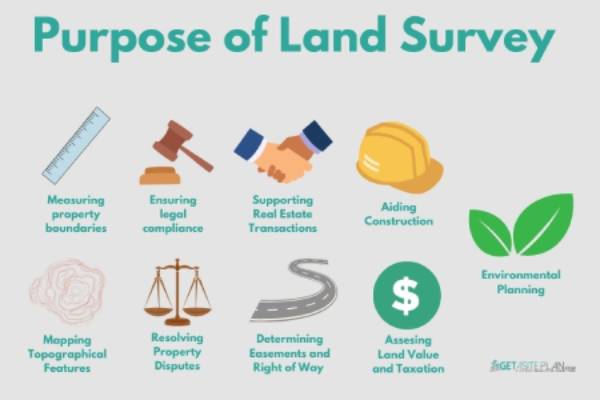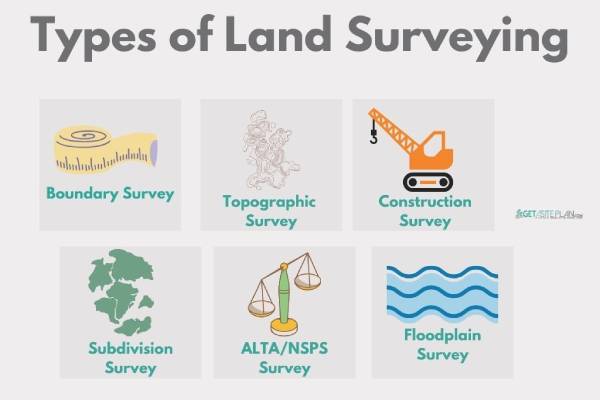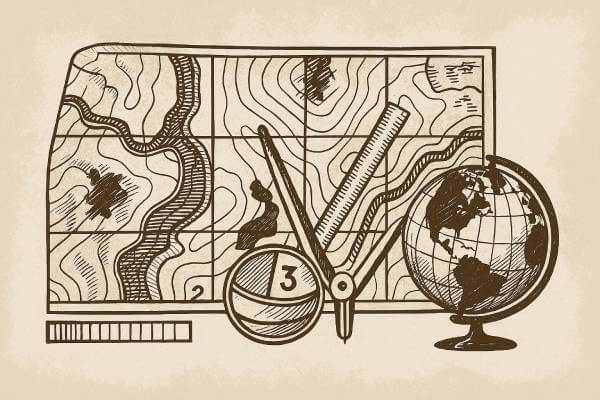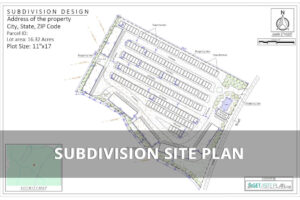
3D Site Plans – Complete Rendering Guide
Before a single foundation is poured or a wall takes shape, every construction project begins with one thing – a plan. But while traditional blueprints show dimensions, 3D site plans


Contributing Writer | Architecture & Design Writer
A land survey, or land surveying, is the process of measuring and mapping a property to define its boundaries accurately.
Yet, land surveying involves much more than precise measurements—it employs various methods to mark and calculate key property details.
At some point, whether you’re buying land, building, or resolving a legal dispute, you’ll likely need a professional survey, and understanding all of its aspects is essential.
This guide will walk you through everything you need to know about land surveys clearly and straightforwardly.
Let’s get started.
Table of Contents
Toggle
A land survey precisely measures and maps a parcel’s boundaries, structures, and natural features. Therefore, the meaning of land surveying lies in providing a comprehensive topographical mapping of the land.
Yet, to fully understand a property’s layout and legal descriptions, a land survey must include several critical components.
A land survey ensures accurate property measurements and informed decision-making.
To fulfill those requirements, a land survey typically includes:
Learning how to read a land survey is crucial for understanding these elements. Nevertheless, containing all these elements, surveying is applied in many situations.

The purpose of a land survey varies from property transactions to large-scale development and legal clarity.
Key purposes include:
However, when planning a project, it’s helpful to understand the key differences between a plot plan and a land survey, as both serve different purposes in property development.
Now, let’s take a closer look at how surveying is done.
Surveying land is conducted using advanced surveying instruments and reliable geodetic data collection. Professionals use specialized tools to create high-quality documents and ensure legal compliance.
These tools help obtain all necessary information about the land.
Geodetic systems establish terrain data by incorporating precise coordinate calculations, a practice outlined in federal surveying guidelines to maintain legal consistency in land records [1].

A land survey results in a detailed map of a property, illustrating its boundaries, physical features, and legal details.
As part of this process, a land survey maps topographical features alongside property boundaries, ensuring a complete representation of the land.
A completed survey typically includes the following key elements:
Together, these components form a comprehensive survey plan, serving as a reference for land ownership, development, and regulatory compliance.
Since these accurate measurements require specialized tools and expertise, land surveying is a meticulous process that cannot be completed quickly.
The time required varies from a few days to several weeks, depending on various factors.
Key factors affecting duration include:
Similarly, land survey costs can fluctuate based on property size, survey type, and terrain conditions.
Regardless of the factors involved, surveying always follows the same steps to completion.
To get your land surveyed, you need to follow a step-by-step process.
The steps to obtain a land survey are:
Yet, before you begin, it’s important to determine what type of documentation your project requires (in some cases, you may need a land survey and a site plan).
Understanding the differences between a site plan and a survey ensures you choose the right document for legal and development purposes.
Since this process has several steps and seems easy, you may wonder if the DIY surveying option is possible.

While you can attempt to analyze your property and conduct a survey of land with basic tools, only a professional survey can ensure accuracy, legality, and reliability.
Professional surveyors use specialized instruments to establish precise property boundaries, ensuring compliance with zoning laws and legal regulations.
Markers define legal boundaries, while professional reports certify property measurements and zoning compliance, providing official documentation for property records.

As land surveys serve different purposes, there are different types, each emphasizing specific aspects of a property.
While all surveys follow the same initial process of measuring and mapping, they vary in detail depending on what needs to be highlighted—whether it’s boundaries, topography, or legal compliance.
Land surveys vary based on their function and the details they provide.
The most common types include:
Besides land survey types, a landowner should also understand the distinction between a plat and a survey, as this knowledge could also help determine which document suits their needs.
Lastly, all these types of land surveys can be conducted for residential or commercial properties, depending on the landowner’s or developer’s specific needs and requirements.

While both types of land surveys define property boundaries and ensure compliance with regulations, they differ in scope and complexity.
Here are the main differences:
Choosing the right survey depends on the property’s use, legal requirements, and future development plans.

To get more familiar with different types of land surveys, you can take a look at examples and drawings. Those will help you distinguish between types and probably help you in deciding which one is most appropriate for your project.
Being an official process, land surveying ensures accuracy, legality, and reliability in property evaluation.
Understanding its technical aspects helps transition from idea to realization and determines whether a professional survey or a simpler alternative is needed.
With this knowledge, you can actively assess and plan for your property needs with confidence.
References:
Learn more about our contributor:

Contributing Writer | Architecture & Design Writer
During my career, I’ve written articles on interior design, home remodeling, and renovation with an emphasis on money-saving tips and DIY ideas. It’s been a rewarding journey and I am thrilled to continue helping others bring their architectural visions to life.

Before a single foundation is poured or a wall takes shape, every construction project begins with one thing – a plan. But while traditional blueprints show dimensions, 3D site plans

Many homeowners start landscaping projects without realizing some require permits. A landscape permit helps ensure compliance with local codes, protects the environment, and prevents drainage or structural problems. Whether you

Picture standing over a blueprint that shows the future of your land – where roads will curve, how each lot will breathe, where every pipe, fence, and tree will fit.